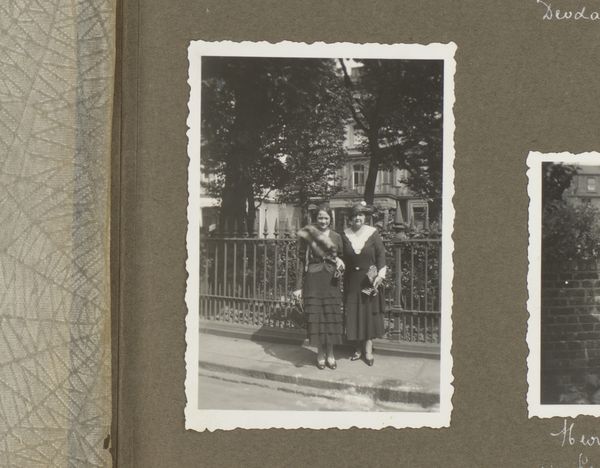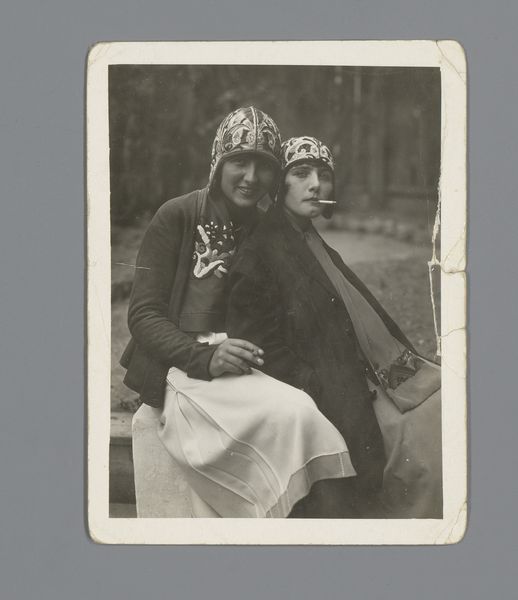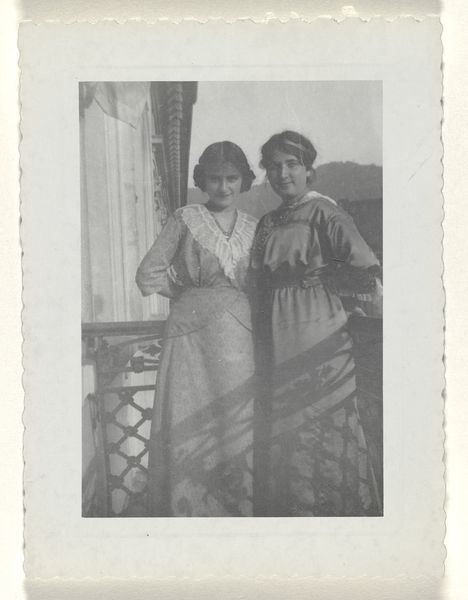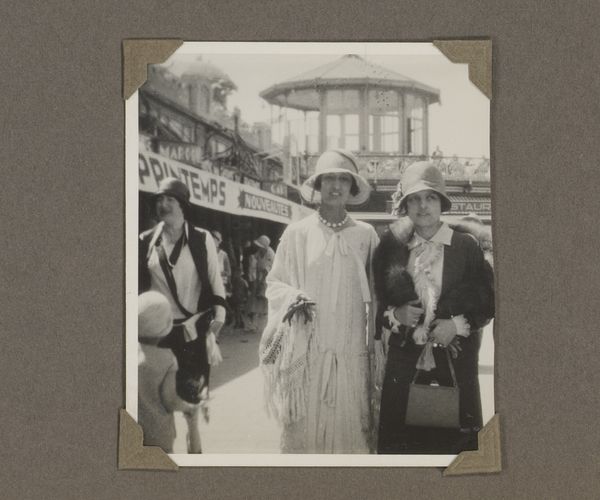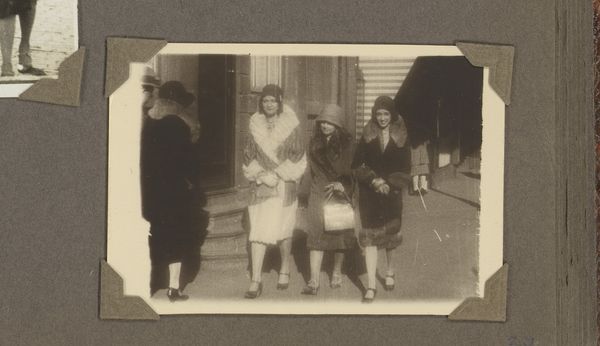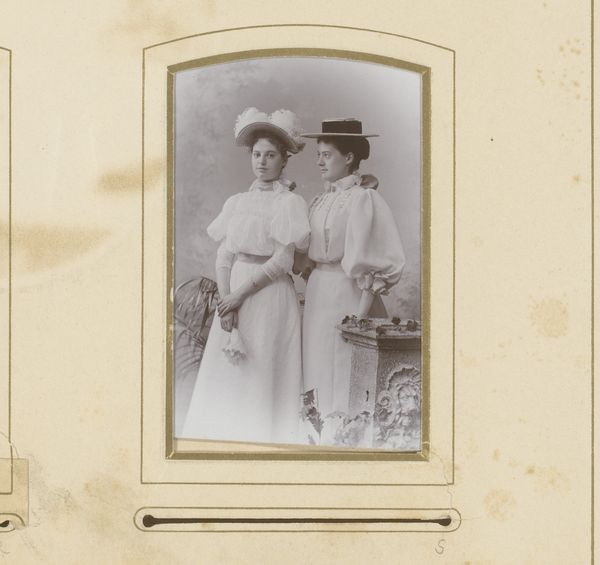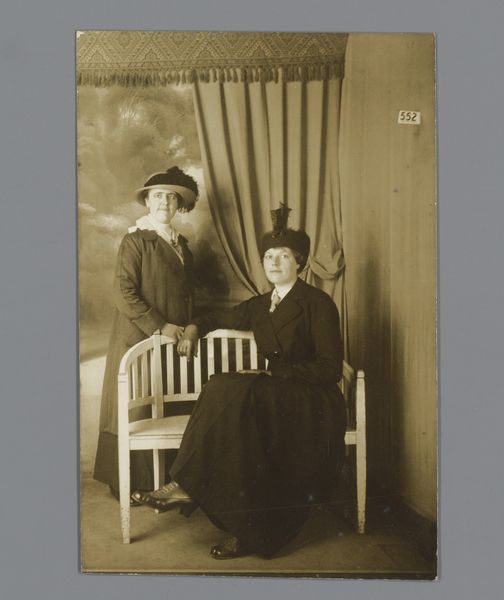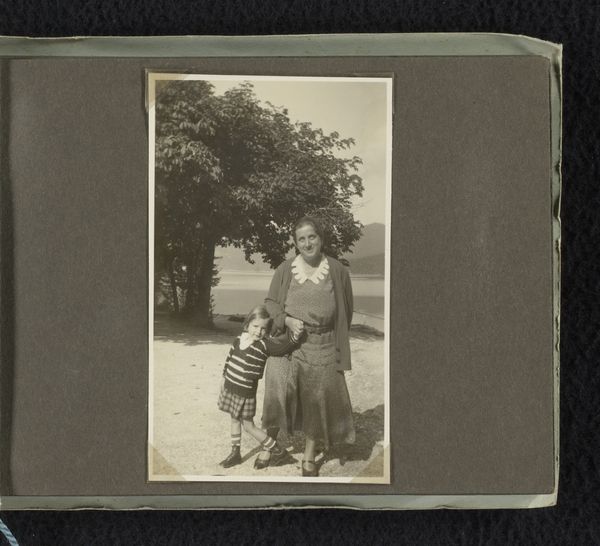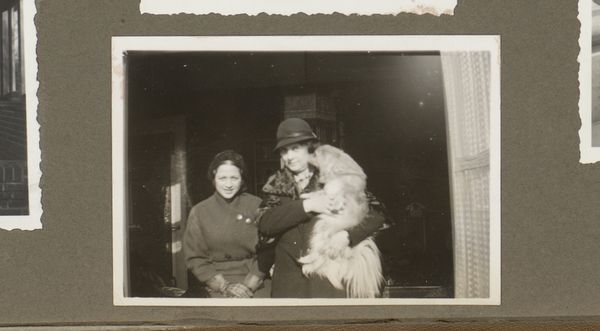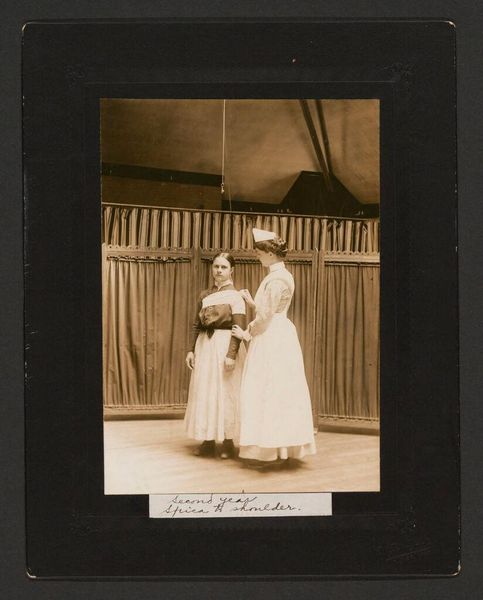
Wilhelmina van Zijll de Jong en en haar moeder Henriëtte Wassink in een huis 1932 - 1937
0:00
0:00
photography
#
portrait
#
17_20th-century
#
photography
Dimensions: height 61 mm, width 86 mm
Copyright: Rijks Museum: Open Domain
Curator: Immediately, what strikes me is the sense of contained intimacy, a study in the contrast between two women, probably mother and daughter in the photograph's original housing space, its careful placement within its scrapbook-like location. Editor: Indeed. This is a photographic work titled "Wilhelmina van Zijll de Jong en en haar moeder Henriëtte Wassink in een huis," made sometime between 1932 and 1937. What is most apparent to me is the production and context surrounding it as a constructed photograph; there are deliberate sartorial details to be taken in. Look at the layering of garments, which must speak to production methods. Curator: Definitely, the fabric is heavy. It makes the space feel a bit more weighty than if we’d had lighter-weight garments. And those plates behind the woman? Someone must have made those; the photograph as process itself opens many considerations for this discussion. The labor, yes? Editor: Absolutely, and the cultural context of displaying material wealth within this domestic setting invites discussions about gendered spaces, expectations for women, and how this family is positioning itself, class-wise, as being consumers. Curator: This family is showing an aspirational, posed position in an environment for potential customers—what sort of power dynamics are implicit in those choices? Even the hats contribute—there’s something intentional being played with and sold in a material, but, importantly, historical, market that implicates both sides. The social power dynamic matters. Editor: Of course, this is also a negotiation of personal space within the constraints of domesticity, so yes, your point about power relations resonates and opens this discussion more than you might know; you said earlier how the image feels staged to suggest intimacy, however, as one’s analysis opens more widely, intimacy moves out of view a little, in my experience. Curator: Agreed, maybe we could describe our understanding as the viewer’s initial intimacy and understanding opening more progressively to allow a social context as an inevitable, more informative component? That allows our discussion to have validity outside of the simple initial, personal take. Editor: And it is that balance and analysis that is both informed and that evolves what gives our perspective depth. It offers something far beyond the snapshot as it moves along—and a potentially challenging read for people today.
Comments
No comments
Be the first to comment and join the conversation on the ultimate creative platform.

